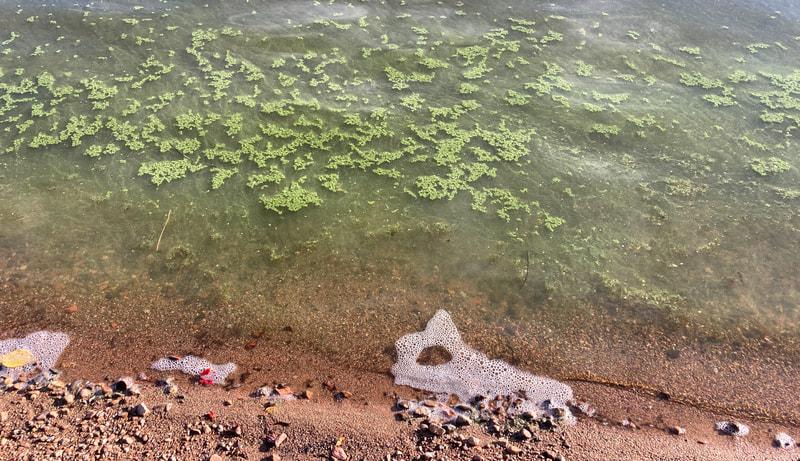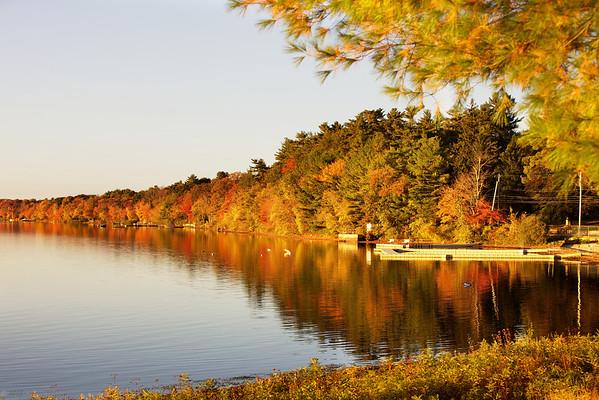
By Maxwell Sheng, Class of ’25
Cover Image by John Phelan: Lake Massapoag on January 19th, 2013
At the heart of Sharon, Massachusetts is a beautiful 392-acre natural spring-fed lake: Lake Massapoag. For Sharon residents, Lake Massapoag is the destination for swimming, boating, kayaking, and fishing. Lake access is also important to organizations such as Everwood Day Camp and Camp Wonderland. But according to one concerned resident, the beloved lake is in desperate need of protective measures.
Laura Henze Russell is the Chair of the Lake Massapoag Advisory Committee, which founded the Love Our Lake campaign. The Love Our Lake signs all over Sharon were the product of Russell’s hard work alongside Vice Chair Debbie Tatro, other committee members, and Nancy Fyler of Neponset River Watershed Association, who created the design. Together, they formed the campaign to help protect and spread awareness about the lake.
Tatro also created the lake website, which proved vital to their campaign. Russell pointed out that the website has important information about “certain algae, major consultant reports, water quality, lake level, and weather.” It’s now a go-to spot for residents to learn more about Lake Massapoag.
Advocating against the use of phosphorus and harmful chemicals, Russell has attended events such as Sharon Day to spread awareness about how these products can affect the lake. Use of lawn fertilizers, she says, needs to be reduced for the lake’s health. She also advises those who live nearby to keep their septic systems maintained. Septic systems have been a brutal challenge for the campaign, Russell commented. “There are times, particularly if there’s heavy rain, that older systems or failing systems—that some of the you-know-what will get into the lake,” she said. Russell acknowledges that replacing failing septic systems can be costly, but she believes that it is essential to protect Lake Massapoag.

Cyanobacteria blooms on the shores of Lake Massapoag
Algae and bacteria blooms have been noticed by many residents over the last few years, identifiable by their green and whitish color as they drift near the lake shorelines. What many residents fail to realize, Russell said, is that algae blooms can be very dangerous. “Over time, it releases toxins,” she said, warning the public not to swim in the lake when blooms are present. “We tell people to stay out of it because it may be transitory, it may be a small area of the lake, but if it’s extensive, then the Board of Health would have to close the lake.”
Two years ago, the Sharon High School biology teachers reached out to Russell in an attempt to gather information from the various beaches of the lake, especially Memorial Beach, where there have been issues with runoff E. coli and cyanobacteria. “The fact that the high school biology classes are doing this is fantastic,” Russell said.
Overall, Russell wants the community to pay attention to climate change and to how what they do at home impacts the lake. The long-term solution for these issues is to take care of not just the lake but the watershed and environment as a whole. “Now that we have these incredibly intense storms,” she said, “you’d think that everybody under the sun would pay attention to climate change.”
So, the next time you see a Love Our Lake sign around Sharon, take a second to think to yourself: What can I do to help protect this beautiful lake?

Lake Massapoag on a clear autumn day. Photo by Constantine Vasilyev
For more information about Lake Massapoag, visit the Lake Massapoag website, which contains key information about the lake and the threats it faces.